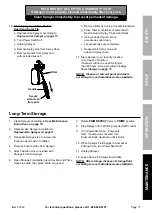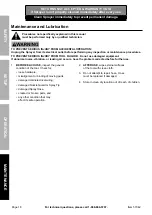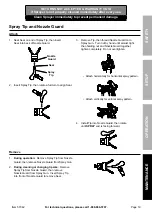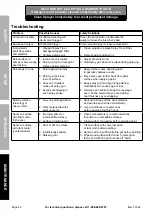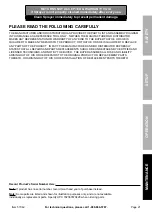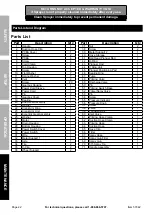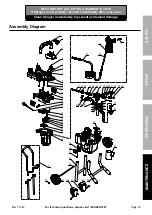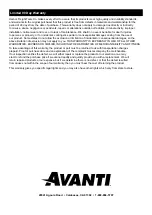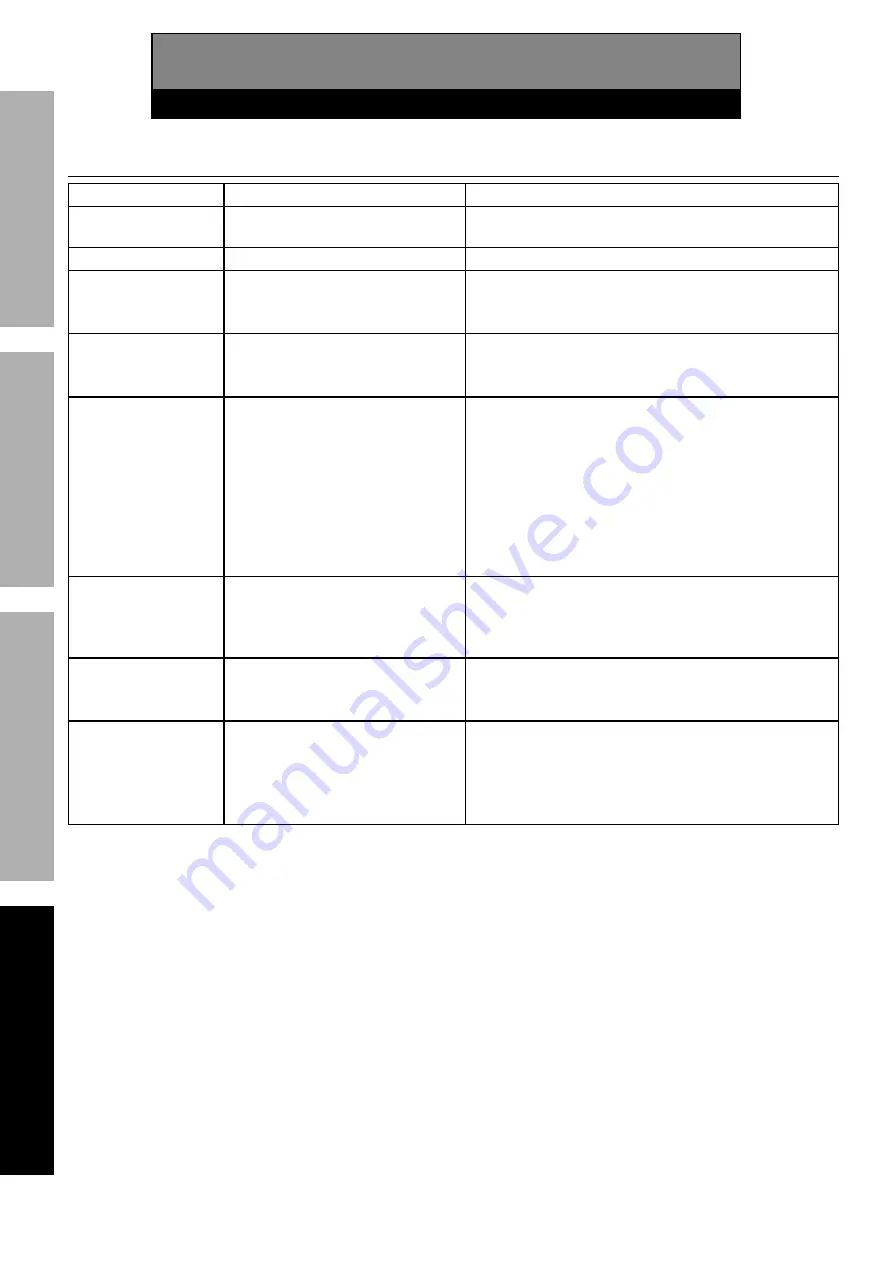
Page 20
For technical questions, please call 1-888-866-5797.
Item 57042
RETURNS NOT ACCEPTED & WARRANTY VOID
if Sprayer is not properly cleaned immediately after every use.
Clean Sprayer immediately to prevent permanent damage.
S
AFETY
O
PERA
TION
M
AINTENANCE
S
ETUP
Troubleshooting
Problem
Possible Causes
Likely Solutions
Pump will not prime.
Insufficient cleaning left
input valve clogged.
Press the prime button underneath the
pump to loosen the inlet check ball.
Decreased output.
Obstructed trigger.
Clean around trigger to ensure movement.
Inconsistent
paint flow, blobs
and splatters.
1. Clogged Spray Tip or
damaged/clogged Filter.
2. Contaminated paint.
1. Clean, adjust or replace Spray Tip or Filter.
2. Remove paint and strain it.
Paint surface is
bumpy or has orange
peel texture.
1. Incorrect paint volume.
2. Paint gun too far from paint
surface during spraying.
1. Adjust Pressure Knob.
2. Hold spray gun closer to surface during spraying.
Paint sags or runs.
1. Paint applied too thick.
2. Paint gun too close
to work surface.
3.
Uneven or hesitant
motion of spray gun.
4. Excess overlapping of
each spray stroke.
1. Apply thinner coats, allowing paint
to get tacky between coats.
2. Move spray gun further back from paint
surface when applying paint.
3.
Keep spray gun moving during painting.
Hesitations can cause sags or runs.
4. Overlap each stroke to keep the coverage
even, but be aware that you are adding
coat thickness by overlapping.
Blotchy surface
(blushing) or
uneven color.
1. Uneven paint application.
2. Work material absorbs
paint unevenly.
1. Start each stroke off the work material
and overlap each stroke consistently.
2. Use a conditioner or sealer coat
before applying the finish coat.
Spots on surface
with light center
(fish eyes).
1. Improper primer or
incompatible surface.
2. Surface contamination.
1. Check manufacturer’s recommendations
for primer or compatible surfaces.
2. Clean surface thoroughly before applying paint.
Spots on surface
with dark center
(contamination).
1. Dust or dirt on surface.
2. Insufficiently sanded.
3.
Raised grain.
1. Clean surface with compressed air
or tack cloth before painting.
2. Sand wood to a sufficiently fine grit before painting.
3.
Wipe wood surface with thinner to raise grain,
then sand with fine grit to knock off “hairs”.












